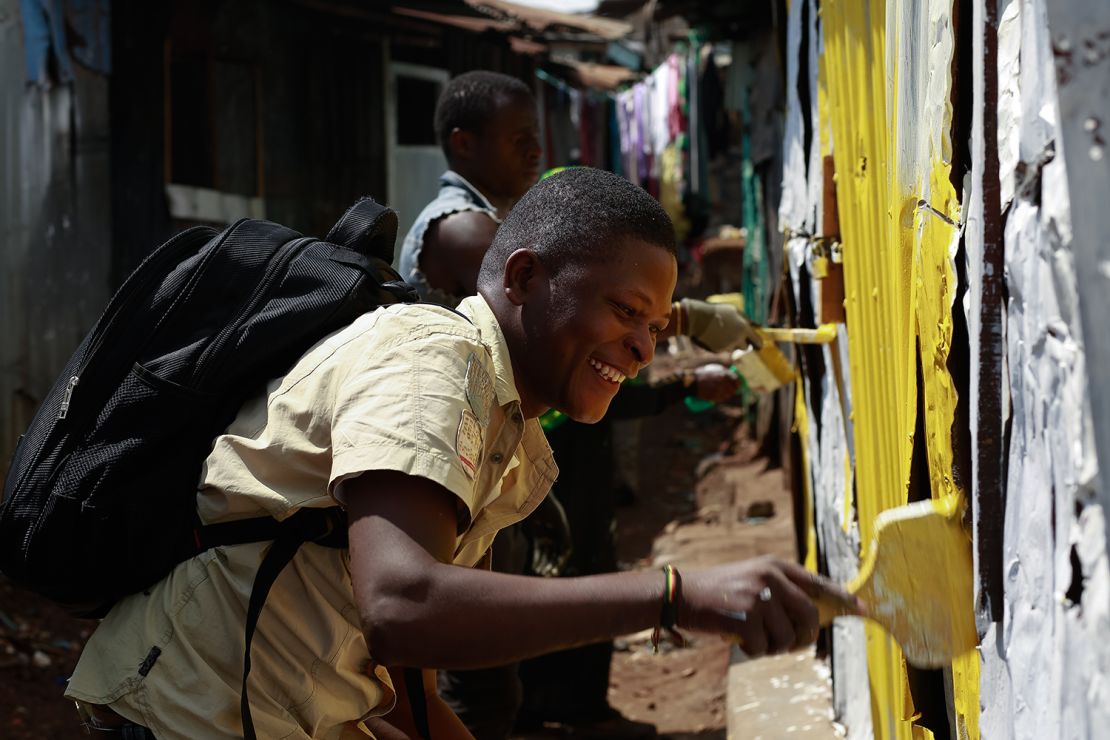Story highlights
Kenyan Christian and Muslim houses of worship are putting up a united front
Colombian-American artist Yazmany Arboleda and Kenyan Nabila Alibhai engineered the transformation
Inter-faith relations have been harmed in the wake of the Garissa attack and rise of Al-Shabaab
From the crowded streets of the Kibera slum to the steamy Mombasa coast, a peculiar trend has emerged across Kenya. Mosques are changing their traditional green facades, churches ditching their typical modest hues and are opting instead for a loud, unmistakable – some may say ostentatious – yellow.
The project, called Color in Faith, is an effort to bring together Kenya’s religious communities and is spearheaded by Colombian-American artist Yazmany Arboleda and his Kenyan counterpart Nabila Alibhai.
Religious leaders say the yellow makeover serves as a symbol.
“For me, yellow is the color of the sun and the sun shines above everybody,” said Bishop Rose Mungafu. Her church in Mombasa recently partnered with the local Muslim community to paint the church yellow.
“We painted together to show our people that we as leaders are together and so Muslims will know Christians are brothers,” Mungafu said. “Now everyone who passes by will know we are in peace.”
New divisions
While Kenya has historically been a home of multiple faiths, the rise of the Islamist terror group Al-Shabaab drove a wedge between Christians and Muslims in the East African nation.
The group often singled out Christians in its attacks, such as the attack on Garissa University College last year which killed 148 people. Many of those killed were students in their morning prayers.
In response to the terror threat, Kenyan security forces launched an anti-terror campaign. The Kenya National Commission on Human Rights and other groups have reported extrajudicial killings and forced disappearances by security services which have disproportionately affected the Somali-Muslim population. The government has repeatedly denied these allegations.
Religious leaders speak of division: “When youth see a church or a Christian, they say, ‘this is the government, this is the group that’s been doing injustices to us,’” said Sheik Yusuf Nasur Abuhamza, who leads Jedda Mosque Kambi in Kibera.
Masjid Musa
For years, police had accused Mombasa’s Masjid Musa of being site of radicalization and recruitment for Al-Shabaab. Just two years ago, police raided the mosque, killing three people and arresting around 130 worshipers inside. Police said they recovered weapons and Shabaab paraphernalia.

“People were so afraid they did not go pray at that mosque,” said Mombasa resident Khalima Mohammed. She says her nephew was killed by crossfire in the community¹s clashes with police in 2014.
Violence has since calmed in Mombasa, and recently the mosque got a fresh coat of bright yellow paint.
“I’ve been asking myself why we should be fighting when we’ve been together so long,” said Mohammed, who now attends the mosque. “I wanted to paint the mosque to show I’m part of the community and to show that we aren’t that different after all.”
A total of nine mosques and churches have been painted across Kenya, and Arboldeda says forty more houses of worship have expressed interest in participating in the project.
Artist Arboleda calls the painted sites “sculptures in the landscape,” and hopes they can serve as change agents. “We are setting an example for how people can imagine a better future for themselves by focusing on our commonalities,” the artist said.
Arboleda says his main goal is to have people different faiths working together in their holy spaces.
“It’s in the process is where the art happens.”










